monopoli
where it is located
Monopoli is an ancient town in Apulia overlooking the Adriatic Sea, located in the province of Bari, between Salento and the Itria Valley.
Monopoli’s origins are supposed to date back to a mighty Messapian fortress located on the border of Peucezia, as today’s Terra di Bari was called before the conquest of the Romans.
Then repopulated in medieval times by exiles from the destroyed Egnatia, Monopoli already in Byzantine and Norman times is remembered as a flourishing maritime city, subject to invasions and pirate attacks because of its strategic location.
What to see in Monopoli in Apulia
If you are thinking of visiting Puglia and in particular Monopoli, here are all the best places you can find in this wonderful city that will guarantee you pleasant walks along the waterfront while the sun caresses your face, between history and art…
1. Castello di Carlo V
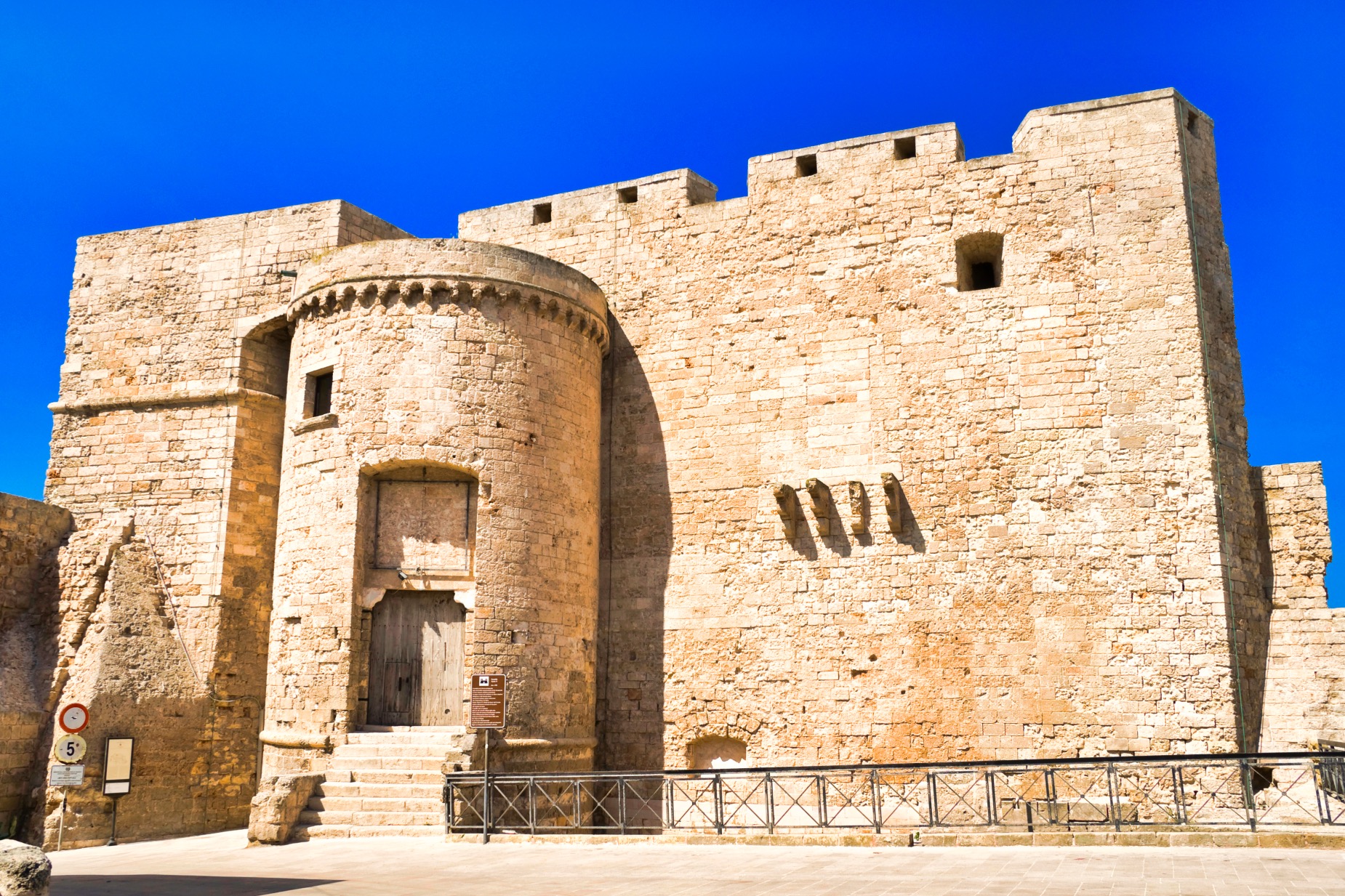
The castle of Carlo V is certainly the flagship of Monopoli, built on the strip of land more advanced than the sea, part of the coastal fortification system, wanted by Charles V in Puglia.
The castle has a pentagonal shape, typical of sixteenth-century fortresses, but it seems to have incorporated a pre-existing cylindrical tower, Roman in shape, which dresses a singular relief at the entrance and at the facade itse.
The basements are also incorporated, which include among other things the ancient Basilian church of San Nicola della Pinna, which has become the church of the fortresssess.
It is even possible to ask the municipality to be able to celebrate with a civil ceremony.
2. Cala vecchia
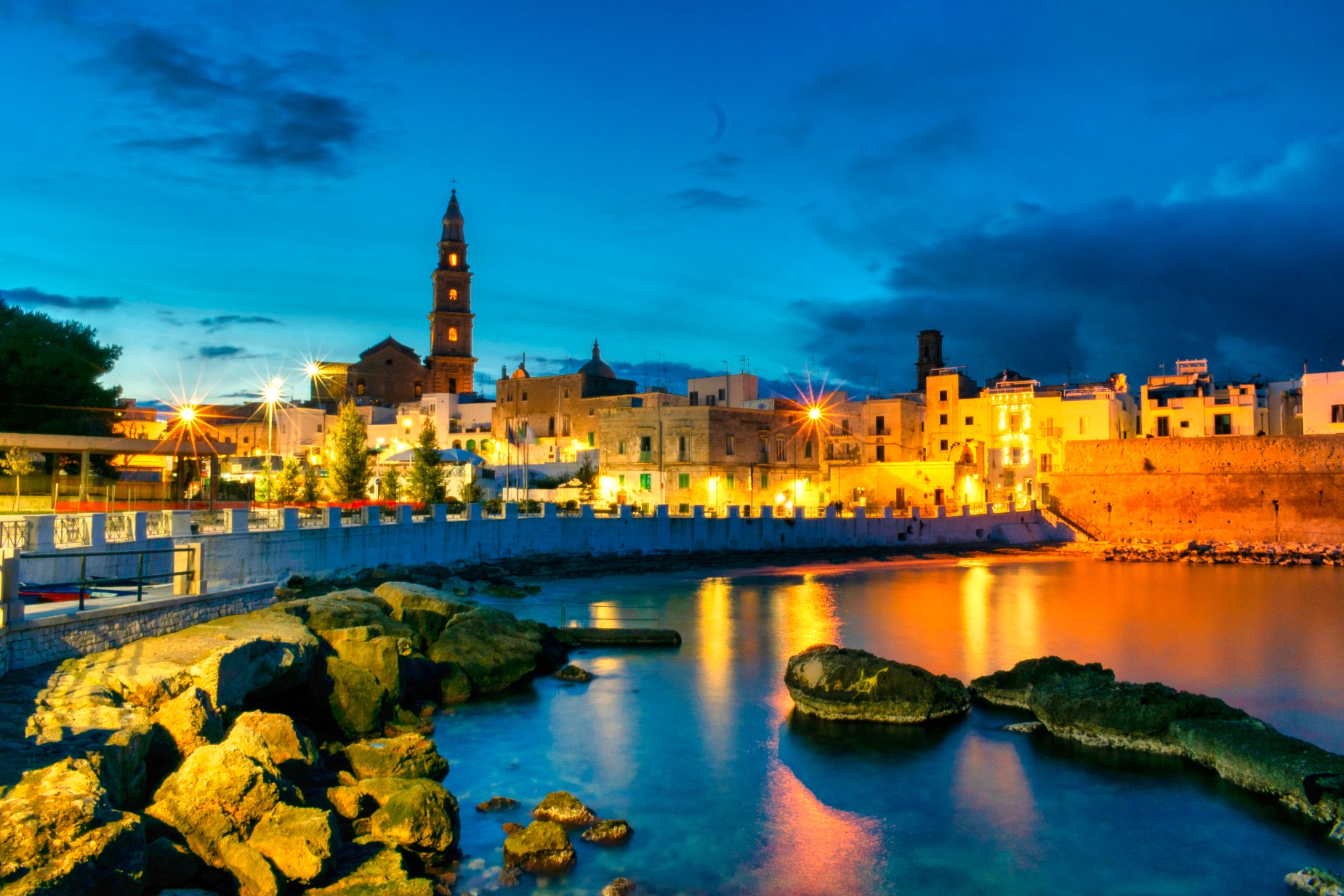
In the heart of the old city, the pretty cove of Porta Vecchia offers bathers a picturesque setting on which the 3 Sails of Legambiente wave.
Chosen as a background in numerous advertising projects of well-known brands and TV series, where the whitewashed houses of the ancient village and the church tower are the backdrop to the sandy beach bathed by crystal clear water, characterized by a shallow and sandy bottom.
A small paradise surrounded by all services at hand, in the nearby city center of Monopoli.
3. Cattedrale di Monopoli
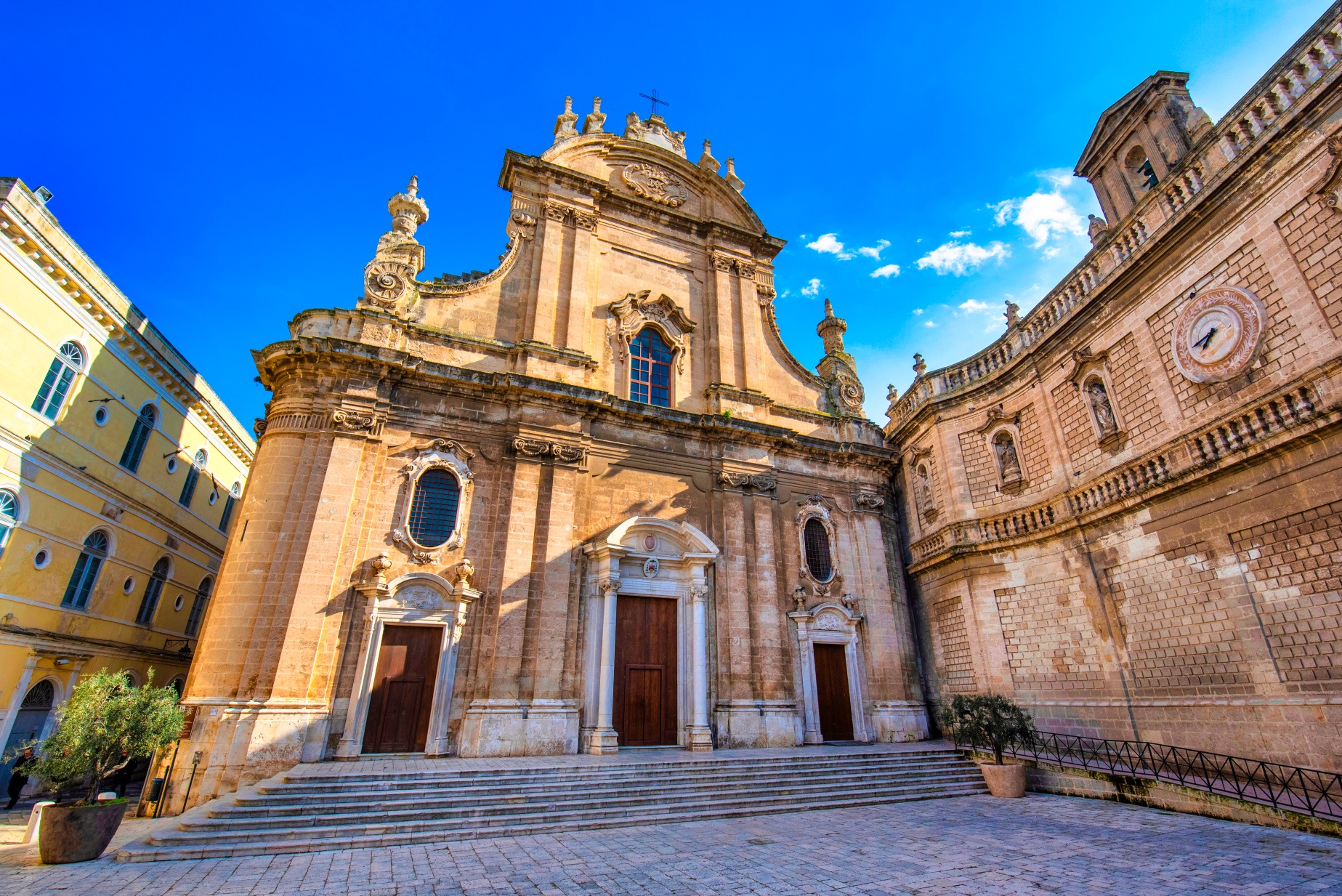
Inside the historic village of Monopoli it is possible to admire a suggestive Baroque setting overlooked by the Cathedral dedicated to the Madonna della Madia, protector of Monopoli.
The icon of the Madonna miraculously landed in the port at dawn on December 16, 1117.
The event is commemorated every year with a heartfelt re-enactment that sees the participation of the entire city on the same date and re-proposed in a solemn form on August 15, with lights and fireworks.
The Cathedral is characterized by the monumental façade and the soaring bell tower which today presents itself as one of the most beautiful Baroque churches in Puglia.
4. Porto vecchio
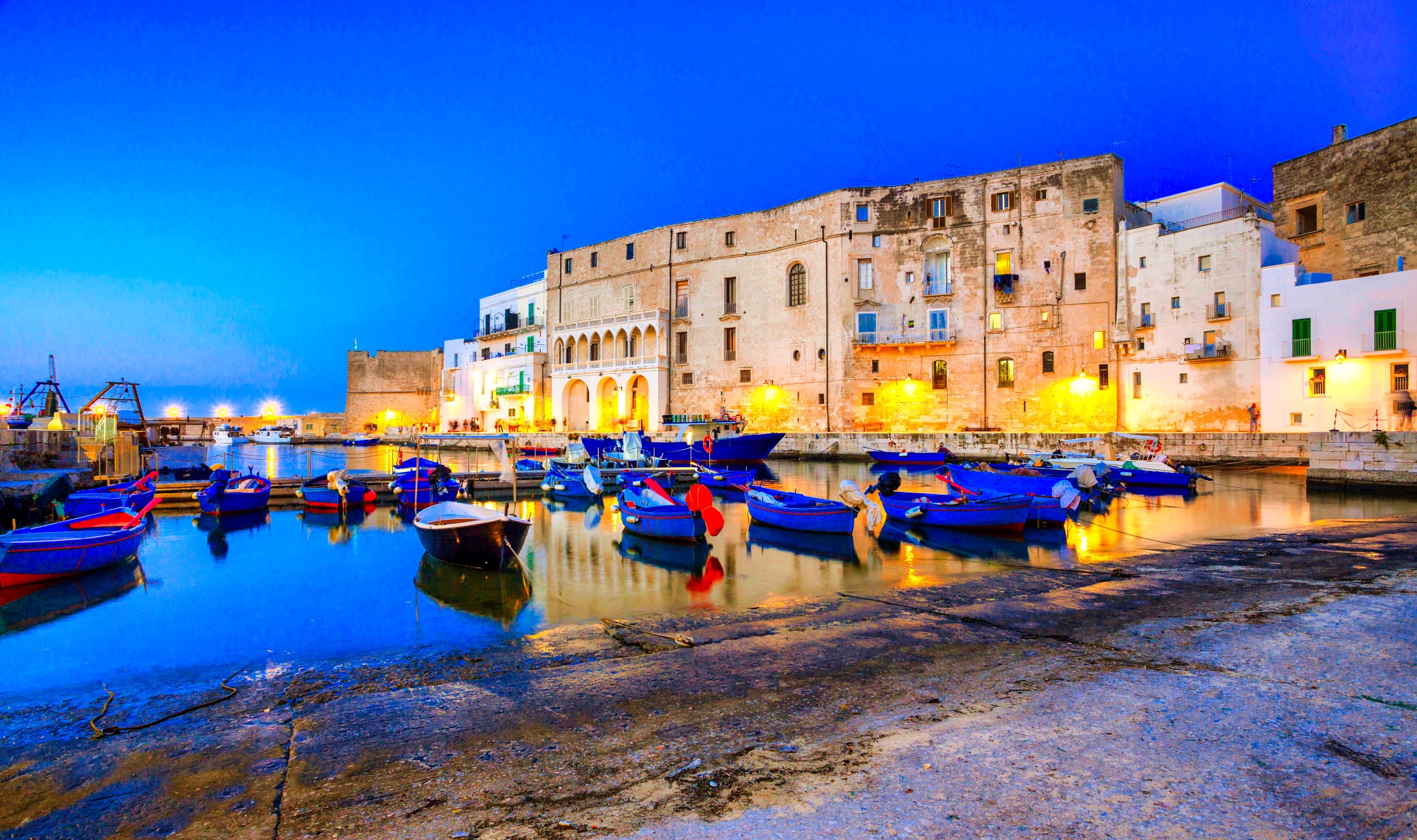
Undoubtedly one of the most important pieces of the city’s identity is the old port, so much so that the New York Times has included it in its ranking of the most evocative places in the world to visit.
But not only … because it was also the site of numerous filming for TV series aired on the main Italian TV channels.
Fishing boats, the so-called gozzi, small boats characteristic of local fishermen can be seen moored in the port.
The port lends itself very well, especially in summer, to long and romantic walks in the moonlight, between architecture and good food.
5. Palazzo Martinelli
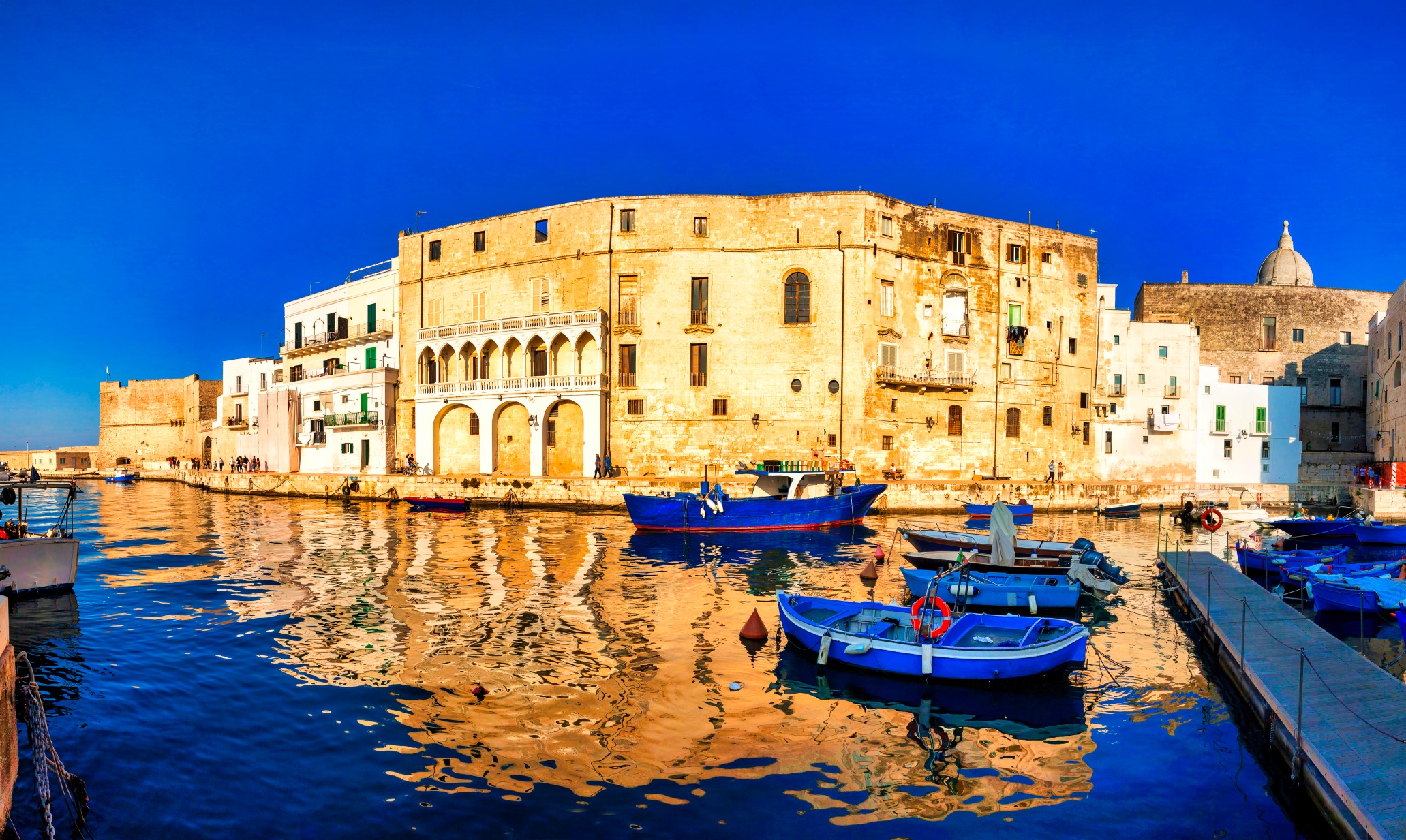
18th century palace, raised on the ancient city walls.
The long façade has eighteenth-century doors – windows, while the monumental entrance portal and the semicircular balconies on the first floor were built and enlarged in neo-Gothic style around the mid-nineteenth century.
The building, on three levels, overlooks the harbor and retains large eighteenth-century windows with pagoda gables and round arches.
A remarkable scenographic effect produces the loggia, erected on three arches, which overlooks the port with eight ogival arches, in neo-Gothic style, and a balcony with balustrades.
6. Piazza Vittorio Emanuele
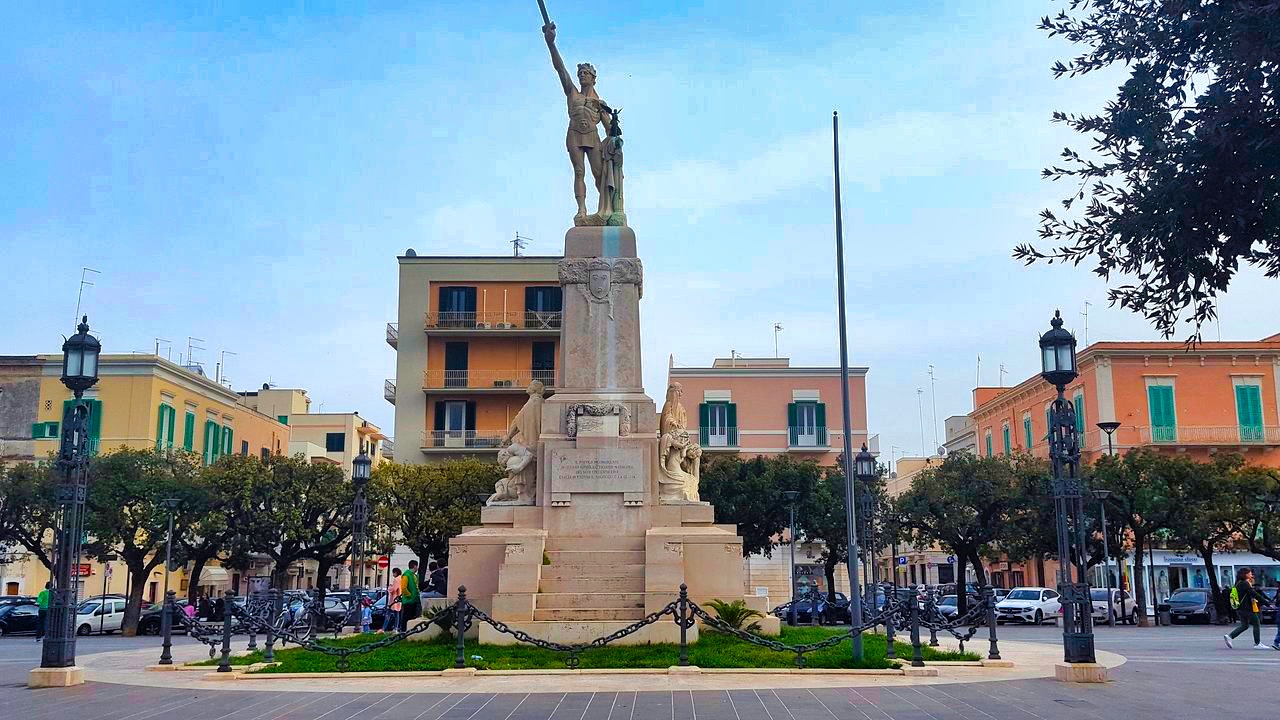
Piazza Vittorio Emanuele is the heart of his city.
It was built in 1796, according to the project carried out by the royal architect Antonio De Simone, with the approval of the King of Naples.
The idea was to create a large square-shaped square that was to represent the meeting point between the old center and the new city.
In the central part of one of the two rectangles stands the war memorial, the work of the sculptor Edoardo Simone of Brindisi who completed the work in 1828 while remaining faithful to the style of the time.
The monument represents an imposing legionary who holds a drawn sword in one hand and a winged victory in the other, at his feet a mother caught in the act of blessing her son who goes to war and another comforting a widow and an orphan of a fallen soldier.
Piazza Vittorio Emanuele is among the largest and most beautiful in Puglia and Italy (about 22,000 square meters).
Called the “village” by the Monopolitans, it represents a meeting point for young people and adults, for simple walks or cultural exchanges, a habit handed down from generation to generation.
7. Chiese rupestri
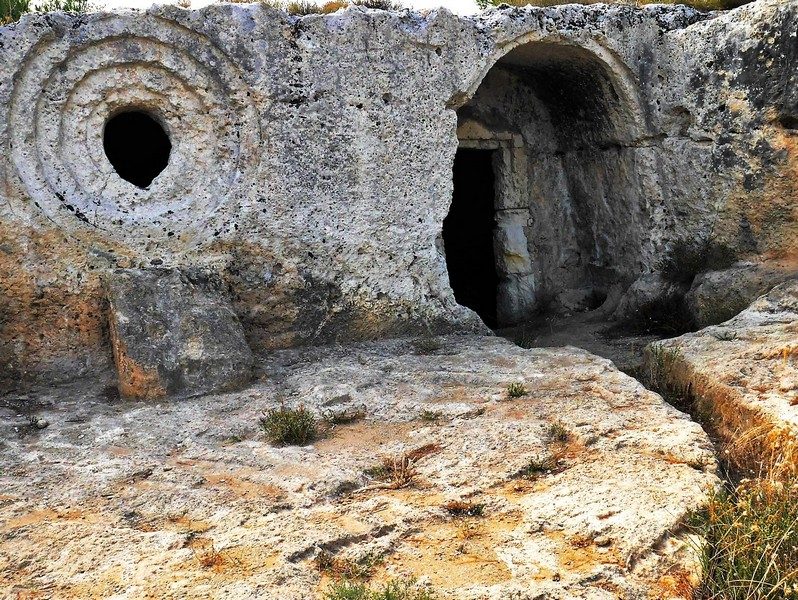
The cave churches are the expression of a rock civilization that developed in Puglia between the sixth and thirteenth centuries, on the banks of the blades or ravines, where real self-sufficient villages with cave-houses, oil mills and frescoed churches develop, which today they are a vehicle for the transmission of local history and culture, which can be visited mostly exclusively through guided tours.
8. Lungomare Santa Maria
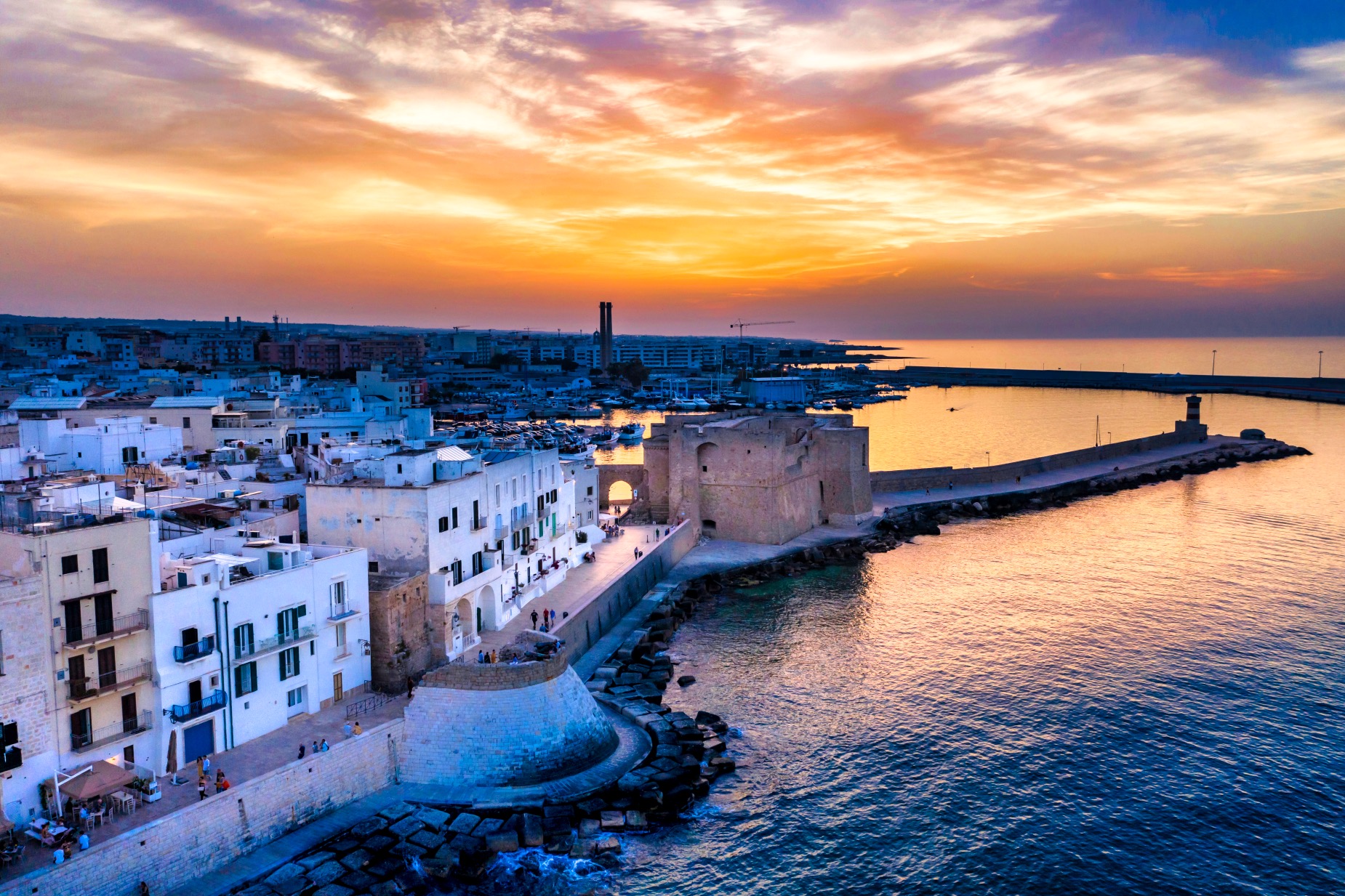
The Santa Maria di Monopoli seafront connects the historic center to the ancient port of Monopoli with its long boundary wall and the bastion of Santa Maria, where you can see the cannon that defended the city from enemy ships.
Ideal for romantic walks or even for dinners with a sea view, the Santa Maria promenade is truly a magical and suggestive place, an important point of the city nightlife.
9. Rifugi Antiaerei
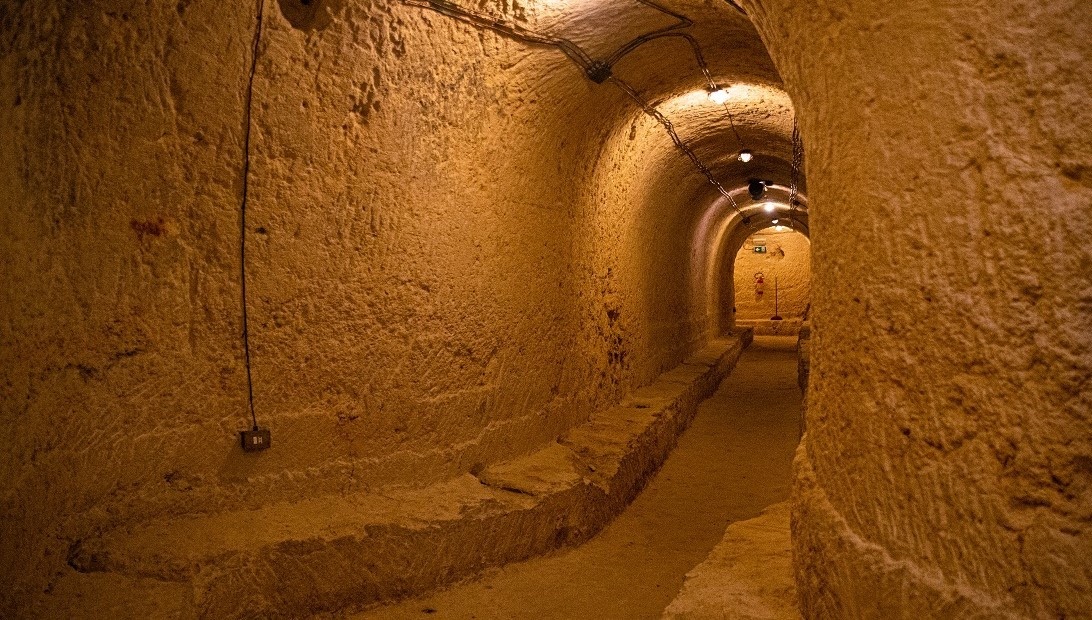
Four hundred meters of tunnels dug into the rock that served as shelter for thousands of people during the bombings of the Second World War.
These types of spaces were created in each city to offer protection to the population during attacks perpetrated first by the Allies and then by the Nazis.
It was built in 1943 to accommodate 4200 people.
The hiding place (which had four entrances, one at each corner of the square) housed the Monopolitans who escaped from the bombing of enemy planes.
Thousands of people were welcomed in the humid spaces dug into the limestone, who had the opportunity to sleep, eat and be treated here.
10. Torre civica dell’orologio
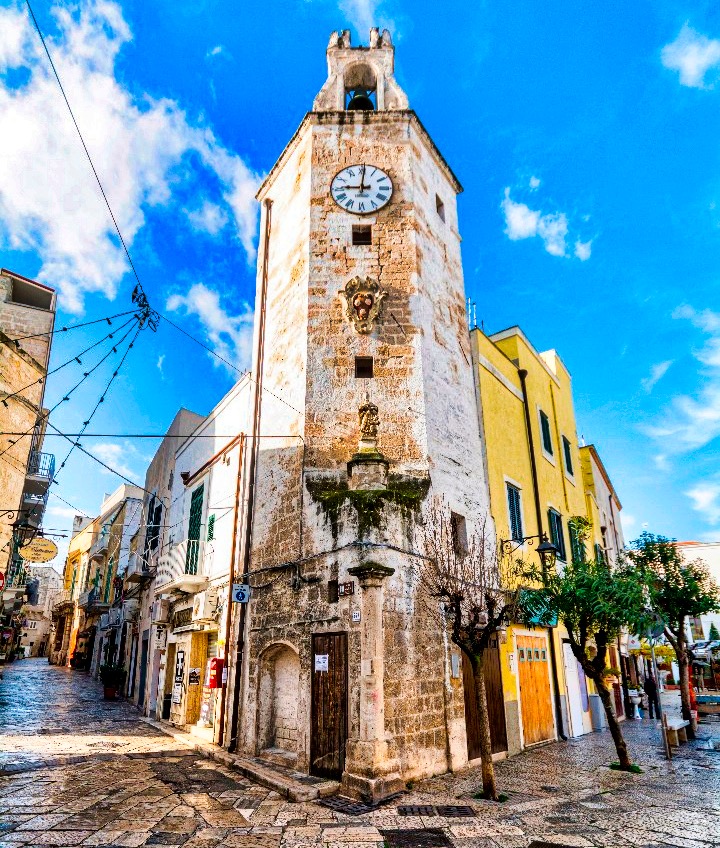
Located in Piazza Giuseppe Garibaldi, 41 in Monopoli, the tower is one of the symbols of the city, a notable example of Baroque “assemblage”.
It dates back to the 12th century and belonged to the Confraternity of San Damiano.
The structure has a semi-hexagonal plan, in exposed tufaceous masonry, with a flat terrace roof that can be walked on: a one-flight staircase leads to the upper floors.
On the ground floor it has an angular column, the so-called “pillory column”, while starting from the second order there are a series of characterizing elements, arranged in axis, such as the civic emblem, the clock and the bell tower.
The seventeenth-century statue of S. Gennaro is placed on a high pedestal.
11. Centro storico
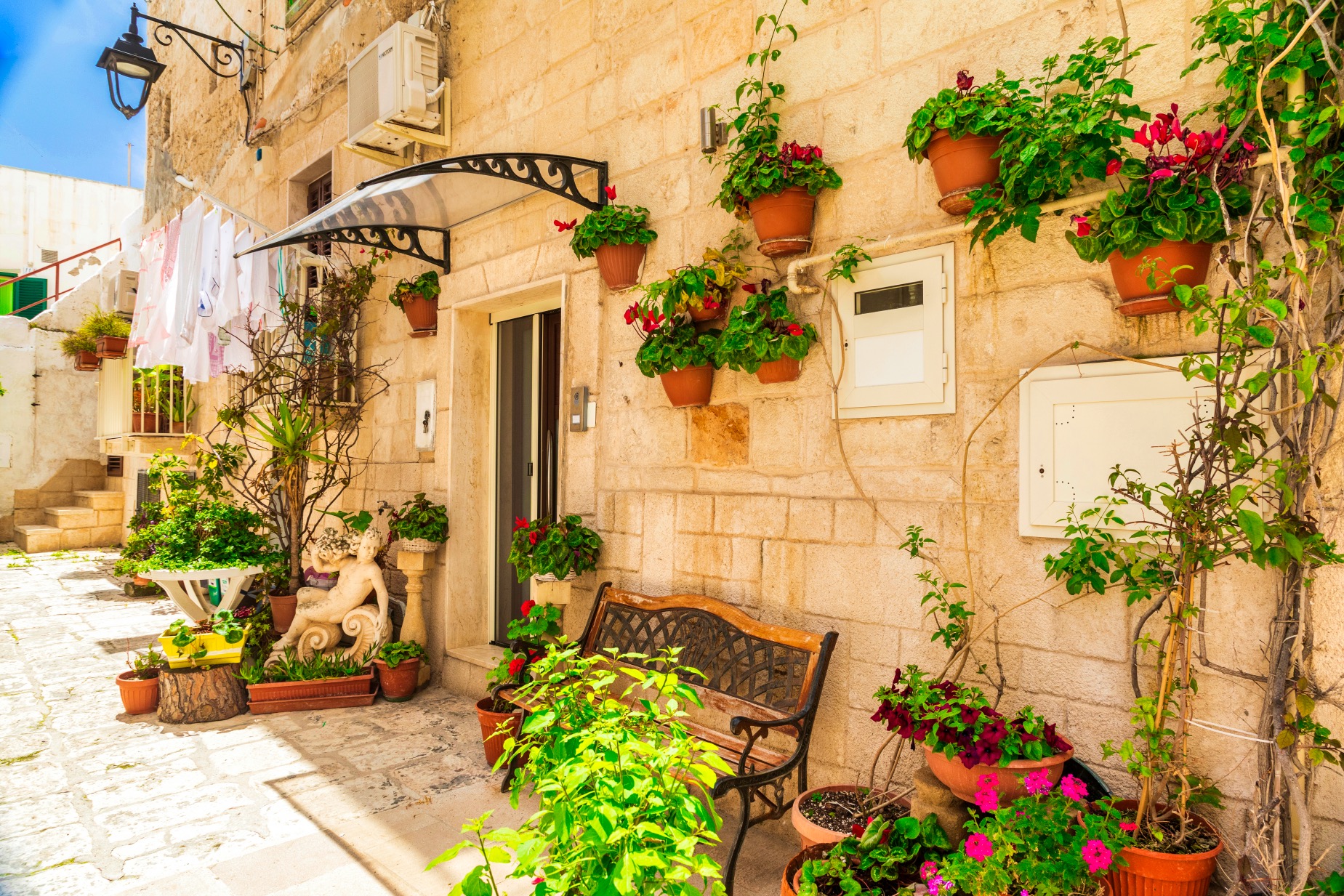
Very white, with old-world charm and adorned with multicolored flowers, the historic center of Monopoli is among the most beautiful, romantic and evocative to visit in Puglia.
A labyrinth of alleys where romantic glimpses are hidden and where you will find yourself in the shadow of beautiful stone arches.
If you’re looking for fun, Monopoli is the right stop, in fact in the evening the entire historic center is populated by legions of young people who wander among the many clubs.
